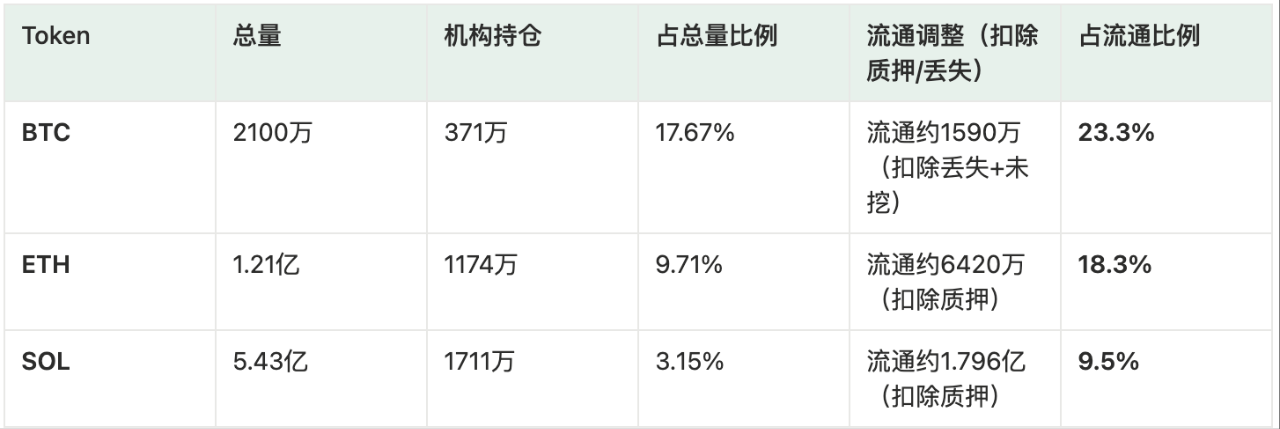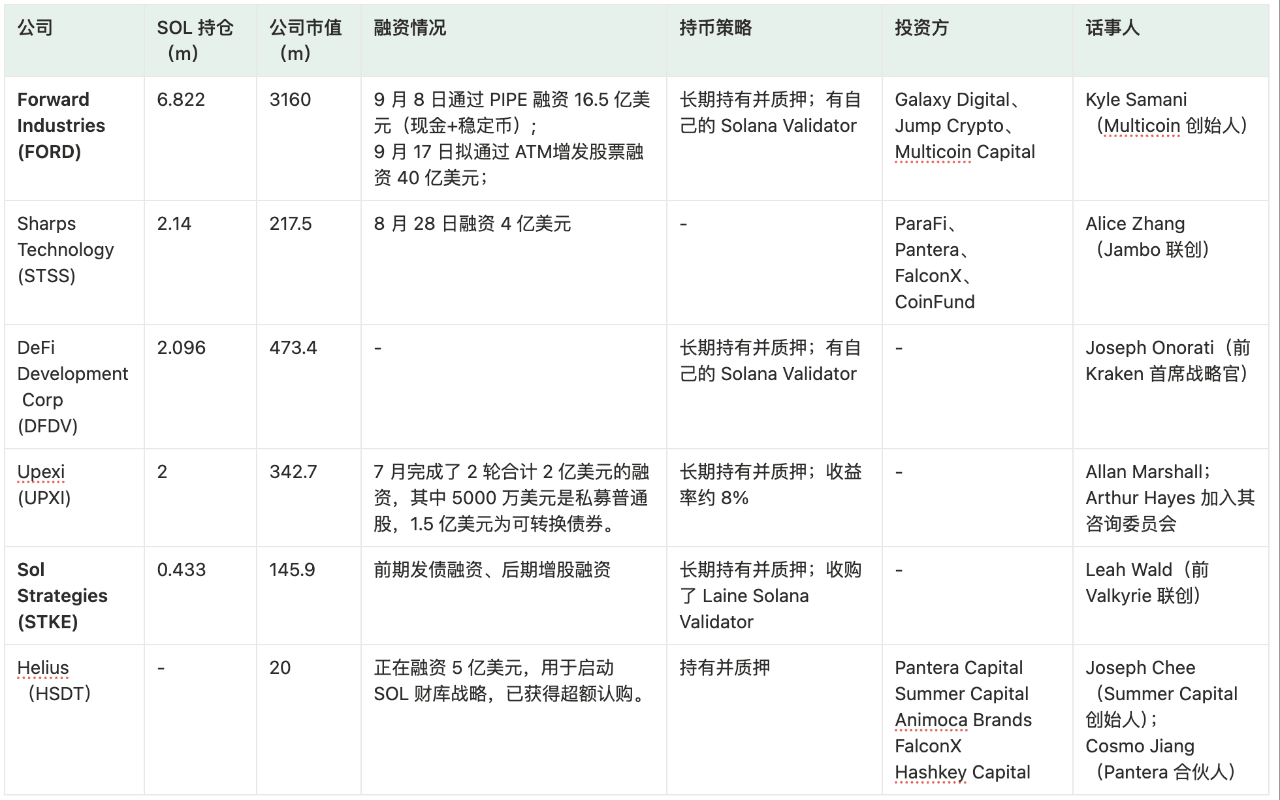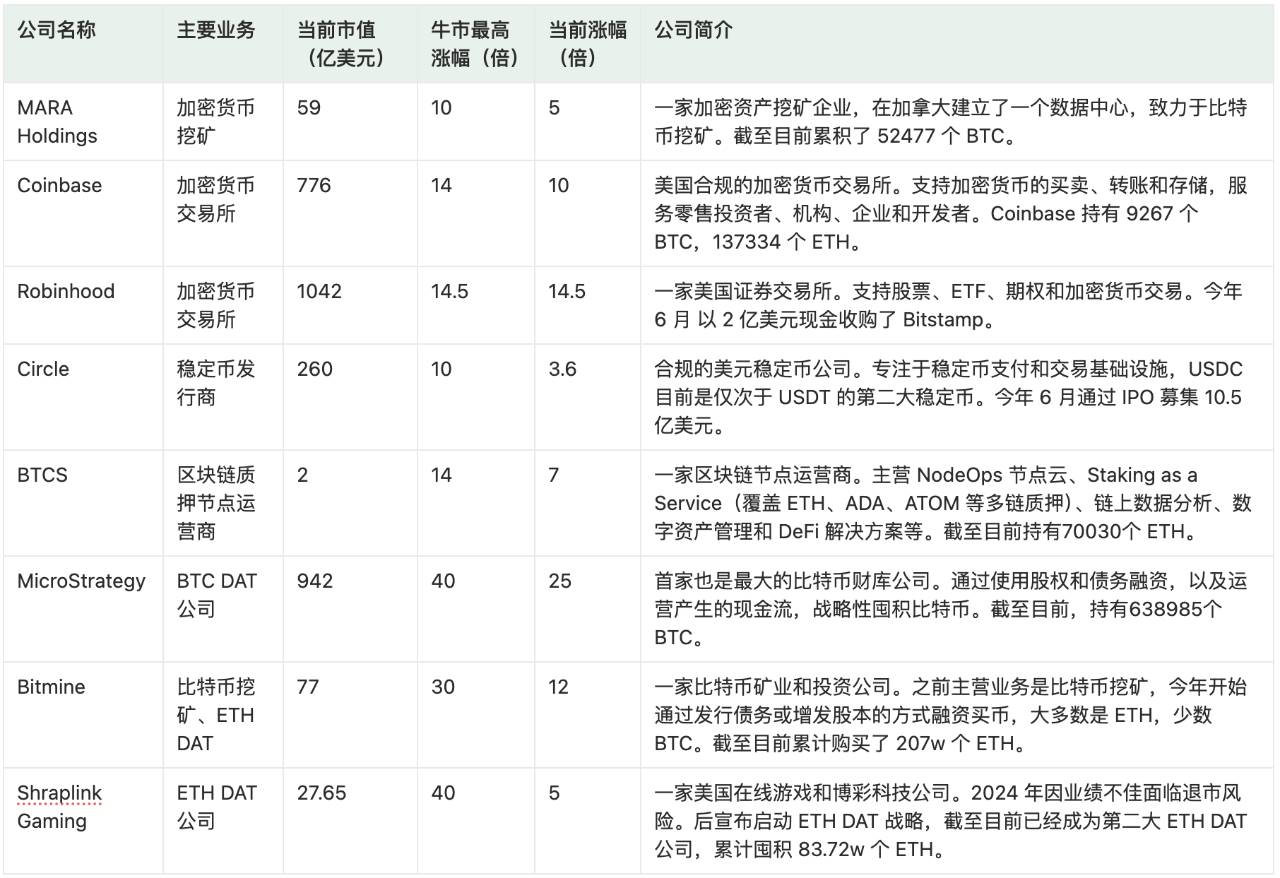The project philosophies of Bitcoin, Ethereum, and Solana correspond to three human instincts when facing the future: survival, order, and liquidity.
The dominant force in this market cycle comes from institutions.
The four major mainstream coins, BTC, ETH, SOL, and BNB, have all set new highs, but only BTC and BNB continued to rise over 40% after breaking historical peaks. SOL broke through earlier this year due to the Trump coin issuance event, while ETH was revalued mid-year driven by DAT buying, but neither has continued to set new highs.
Last night, the Federal Reserve cut interest rates. How far can this institution-led market cycle go?
1. Institutional Allocation Logic of the Three Major Coins
The positioning of crypto assets directly determines their long-term value, with different positions corresponding to different institutional allocation logic.
Bitcoin: Anti-Inflation Properties of Digital Gold
Positioned as "Digital Gold," its long-term logic is strongly tied to fiat currency inflation cycles. Data shows that its market cap growth is synchronized with Global M2 and negatively correlated with the US dollar index. Its core value lies in "anti-inflation + preservation and appreciation," making it a foundational asset for institutional allocation.
Ethereum: Institutional Narrative Dividend of the World Computer
Positioned as the "World Computer," although the "Layer 2 scaling" narrative promoted by the foundation has not gained recognition in the capital market, its stable system with ten years of zero downtime has caught the development wave of dollar stablecoins, RWA, and tokenization of US stocks, freeing it from the impact of the Web3 narrative collapse. Coupled with the key push from DAT, it has achieved market cap revaluation. Ethereum is set to become the settlement network for institutional-level applications due to its stability and security.
Solana: Active Advantage of Internet Capital Markets
Positioned as "Internet Capital Markets," ICM refers to the on-chain asset issuance, trading, and clearing system. It achieved a "rebirth" after the FTX collapse crisis. Since the beginning of the year, it has accounted for 46% of on-chain trading volume, with daily active users consistently exceeding 3 million, making it the most active blockchain network currently. Solana will leverage its superior performance and high liquidity to support the crypto-native on-chain trading ecosystem.
The three have distinct positions, leading to different institutional allocation logic. Traditional financial institutions first understand the value of Bitcoin, then consider developing their institutional business based on Ethereum, and finally may recognize the value of on-chain trading. This is a typical path: questioning, understanding, becoming.
2. Gradient Differences in Institutional Holdings of the Three Major Coins
The institutional holding data for BTC, ETH, and SOL shows significant gradient differences, reflecting the level and pace of institutional recognition for these three projects.

Table created by: IOBC Capital
From the comparison, it can be seen that the institutional holdings as a percentage of circulating supply for BTC and ETH are > 18%; SOL currently stands at only 9.5%, indicating potential room for growth.
3. SOL DAT: New Trends in Crypto Concept Stocks
In the past month, 18 SOL DAT companies have emerged, directly driving SOL up over 50% from its low in August.
Notable SOL DAT companies:

Table created by: IOBC Capital
Among the existing SOL DAT companies, Forward Industries, led by Multicoin Capital founder Kyle Samani, may become the leader in SOL DAT.
Unlike the simple hoarding of BTC DAT, many SOL DAT companies will build their own Solana Validators, making this endeavor not limited to "NAV games." Instead of merely waiting for token appreciation, they will continuously generate cash flow through Validator operations. This strategy is akin to "hoarding coins + mining," aiming for both long-term gains and immediate income.
4. Crypto Concept Stocks: A Reflection of Capital Market Bets
Crypto concept stocks serve as a new bridge between traditional capital and the crypto market, with the level of recognition from traditional financial markets for various crypto businesses also reflected in the stock price performance of crypto concept stocks.

Table created by: IOBC Capital
Reviewing the outstanding performance of crypto concept stocks in this round, two common characteristics can be observed:
Heavy bets are required to achieve valuation revaluation. There are 189 listed companies holding BTC, but only 30 have holdings valued at 70% of their stock market cap, and only 12 hold more than 10,000 BTC—these 12 have seen considerable price increases. ETH DAT listed companies show a similar pattern. A superficial DAT strategy can only trigger short-term stock price fluctuations without substantially boosting stock market cap and liquidity.
Business synergy amplifies commercial value. Transforming single-point businesses into multi-faceted industry chain layouts can amplify commercial value. For example, Robinhood has formed a business closed loop through its involvement in cryptocurrency trading, real-world asset trading (RRE), and participation in USDG stablecoin, leading to continuous stock price highs. In contrast, Trump Media, despite its significant involvement in crypto (holding BTC, applying for ETH ETF, issuing coins like Trump, Melania, WLFI, etc.), lacks synergy between its businesses, resulting in a muted market response to both its stock and coins.
Conclusion
The project philosophies of Bitcoin, Ethereum, and Solana correspond to three human instincts when facing the future—survival, order, and liquidity.
免责声明:本文章仅代表作者个人观点,不代表本平台的立场和观点。本文章仅供信息分享,不构成对任何人的任何投资建议。用户与作者之间的任何争议,与本平台无关。如网页中刊载的文章或图片涉及侵权,请提供相关的权利证明和身份证明发送邮件到support@aicoin.com,本平台相关工作人员将会进行核查。




